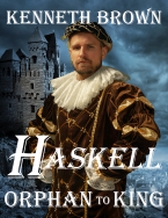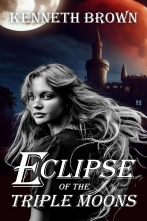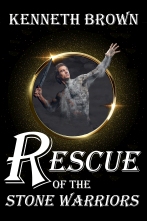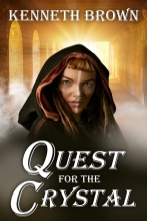Adgitize Press
Understanding the Scene Process
By: Ken Brown
Published: 6/29/2019
Digging Deeper into a Scene
Sometimes the goal of the scene is obvious so you don’t have to show it.
You don’t want to go into detail about the scene so you summarize that it occurred off screen. Maybe a violent act occurs. Down play the event or summarize it at the beginning of the sequel. Suzy sees her boyfriend walk into a restaurant with another woman. The reaction scene will be Suzy’s reaction to the event, we don’t have to see what happens at the restaurant. It is Suzy’s reaction that matters.
Sometimes the character started the scene with one goal and it got replaced because of the conflicts that occurred.
It is okay for an incident to occur, where there are no conflicts. The detective talks to an old friend that witnessed the fight. It is just gaining information that is important to the story, but no conflict. I always think of the person that doesn’t like to sit in a crowded theater with small chairs. And the person finds herself squeezed in between two large men that have no sense of boundary and their legs are touching hers. We could have conflict, but it might all be reaction and dilemma as she doesn’t want to make a scene during the performance. That’s where the scene is character development. We see the woman as afraid to make the guys use their own space for their legs. What else does that show us about the woman?
A casual meeting between two people to introduce other characters or serve as a distraction while important information is being exchanged. The reader is so caught up with what’s happening they miss the detailed nuance between two of the characters. Your character meets a beautiful woman in the elevator but in fifteen seconds reaches his floor and leaves the elevator and the beautiful woman. Later on that woman plays a role in the story.
Incidents and happenings are brief and have a small to limited amount of conflict.
Scene Variations
What if the good guy and the bad guy in your story have similar goals? They both want to marry the billionaire’s daughter. That’s excellent. Because now you can compare the two of them and how they try to reach their goal. This is perfect if your novel has a theme and you want to show two sides of a coin. You make the two nearly identical except for the one flaw that makes your point. There is no bad guy, just different ways to achieve the same result. What happens to our hero if he makes the same choices as the antagonist? Will he become like the antagonist?
Don’t make conflict just for conflict sake. The conflict should tell us something about the character, show us the power of the villain, show us the harshness of the landscape or lead us to the plot goals. Your character’s efforts must have meaning. Have your conflict flow from the plot which means it flows from character values, personality, motivations, goals and reactions. What causes the conflict and what changes will it cause in future scenes.
Remember that the antagonist can be successful in his goals, because his success will cause the protagonist additional conflict, stress and reaction. When the bad guy wins a scene, then by extension the good guy loses and the reader worries.
To make your conflict between characters realistic make sure all your characters aren’t exactly the same. For example, my brother Dave and I are both from the same mother and father, grew up in the same household and went to the same high school. But we are totally different in our beliefs, our goals, how to reach those goals and what our lives mean to others. When we get together we argue, because we come at situations from completely different points of view. Make your characters have different values and you will have plenty of conflict without even trying.
Vary the tension on arguments. Review your scenes and if you find that someone is storming out of each scene and slamming the door then make some scenes less volatile. All arguments don’t have to be screamers. Practice writing an argument as a shouting match. Then re-write the exact same argument as a discussion with the argument as an undercurrent. Imagine the two people in a funeral home or someplace else where they can’t yell. Other people in the room will feel the tension, even though no-one shouts or slams a door. The argument may be about toothpaste, but the subtext is about a failing marriage.
Have you ever witnessed a person that is trying hard not to get angry? His words are polite and respectful but you see his face turning red, he’s clenching his hands into fists and his body language is showing the desire to punch the other person. Can he control himself? Shows us character compared to the bully who wants to punch someone and does. Or takes revenge some other way.
Remember that the disaster is to thwart your character’s dreams and desires and make her life miserable. Like that old saying, the character takes three steps forward, but two steps back or sometimes two steps forward and three steps back. Always push the character away from achieving their goal. Even let the hero get what they want only to find it makes things worse.
Sequel Variations
The sequel within the scene itself. In our story, Suzy could have her reactions after each of the conflicts with John and Billy. So the reaction / sequel part of our story has Suzy reacting in real time. If someone throws red wine on Suzy’s white blouse, she may not wait until later to react. In a bar with a bunch of drunk men in it and someone throws beer over a man’s girlfriend, he may react immediately.
You can have the man and woman at the bar have the sequel portion when they get home as she is a trained psychologist and wants to show her boyfriend better strategies for reacting than beating up another person.
Reaction with flashback. Did the disaster cause our character to remember a similar incident from their childhood? Maybe you want to include a flashback scene to the childhood incident and how does she feel about her reaction today compared to 25 years ago? The sequel is a good place to put a flashback and have the character evaluate the two incidents side by side.
I have that in my book where my wizard character, Al, feels like the wizard coach is riding him hard and Al isn’t having fun or succeeding at wizarding. Reminds him of how the basketball coach treated the un-coordinated Al in high school.
What happens if Suzy enacts her plan to solve her disaster, but her plans make things worse? Great. Makes for a wonderful, real-life story. Not happy people in happy land.
During the climax, especially a thriller with a Mission Impossible type of scene, we aren’t going to have the character take a whole chapter to tell us how he feels about being shot in the leg by the bad guy. Adrenaline will rush through his body, he’ll tell the reader he has to ignore the pain and continue after the bad guy. Boom. End of sequel.
Shorter sequels mean faster movement and pacing. Longer sequels will slow the action and pacing, but reinforces plausibility.
Time spent on the different sections of the sequel, reaction, dilemma, and decision can be different depending on the needs of the scene.
The sequel can be interrupted by the next goal, conflict and disaster. A woman is trying to get home from work for her child’s birthday party. She misses the express train to the suburbs. The next train arrives and she gets on the train. She begins to think about how missing the express train, will mess up her original plans. She about has the answer to how to get all the stuff for the party and still make it all work when she feels the train lurch left and right, hears the squeals of the brakes and looks out the window at the crumbling infrastructure from an earthquake.
Recent Blog Articles
Full Moon Snow Covered Backyard
My Current Projects October 2020
Make Your Settings Do Double Duty
Understanding the Scene Process
What is a Scene Purpose or Focus
The Reaction Scene or Sequel Scene
What are the Building Blocks of a Novel
Your Writing Effort is Front Loaded
What I Learned from Reading Lee Child Books
Six Reasons to Describe Your Characters




